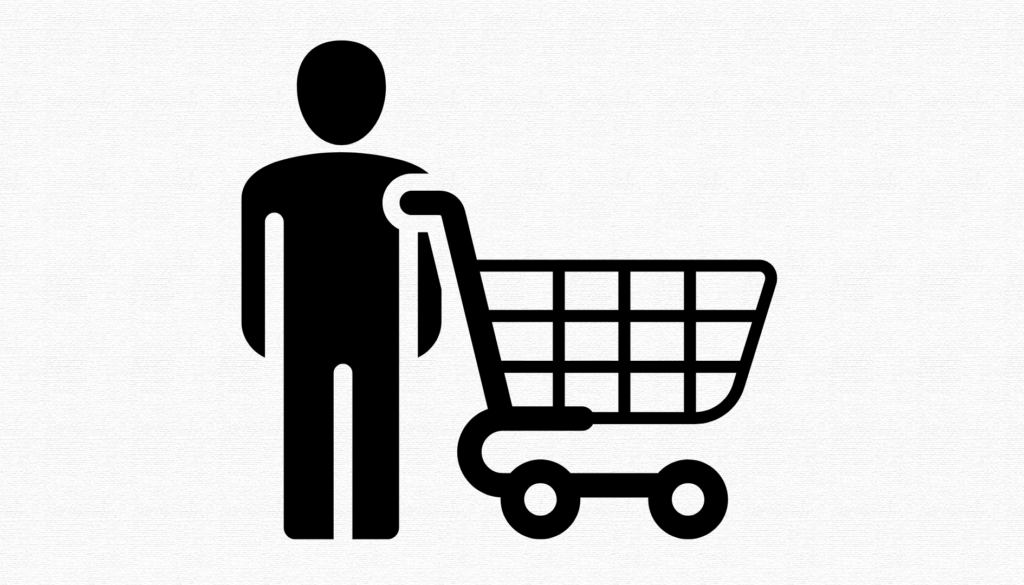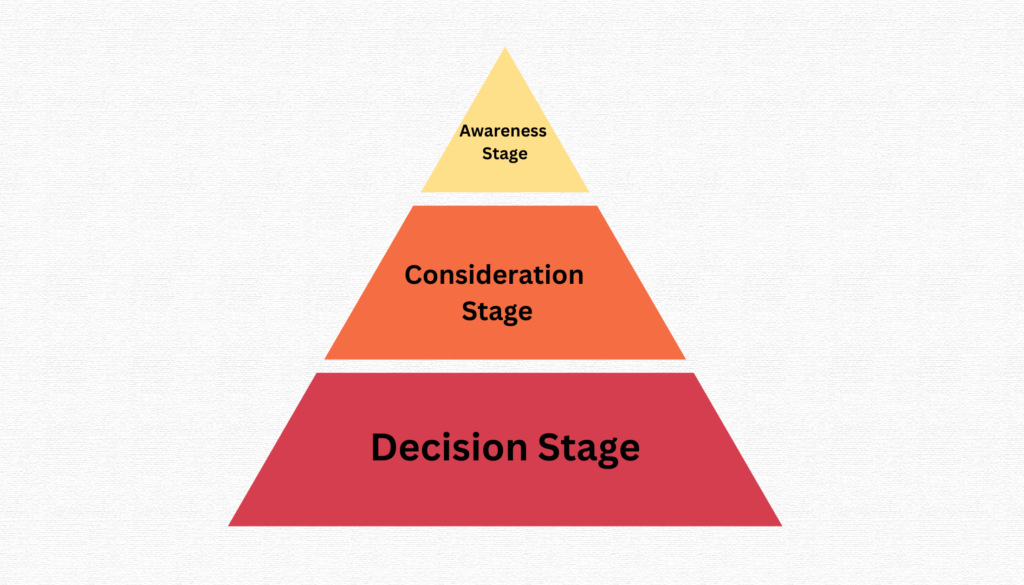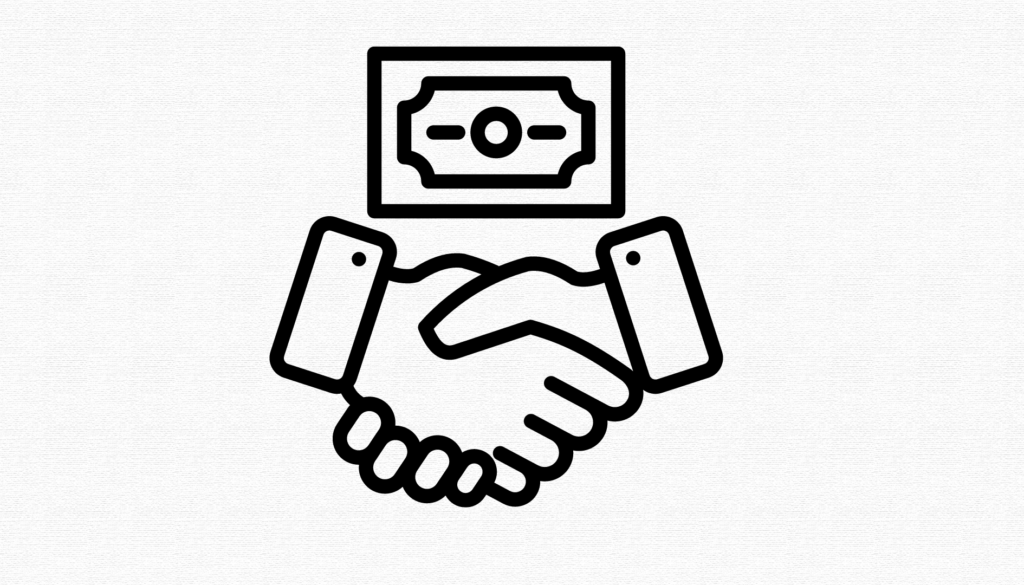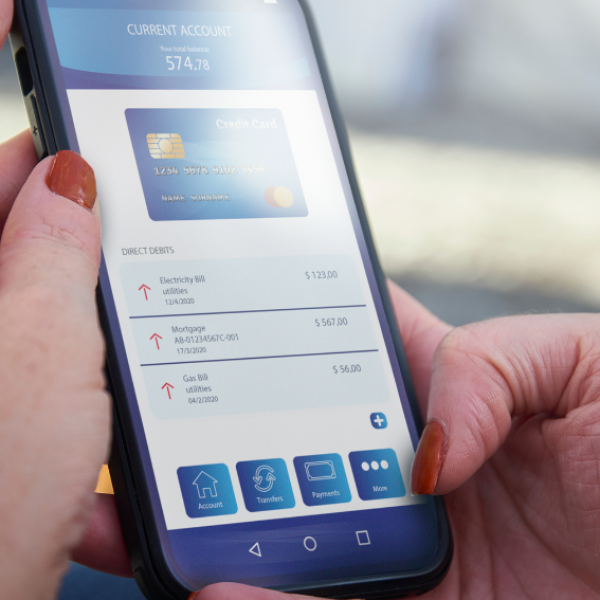Thanks to the abundance of information combined with easy access to the internet, today’s buyers are well-informed (sometimes more than the sales reps). 74% of sales representatives report that customers research before engaging with sales teams. Generic scripts and uniform approaches are ineffective with knowledgeable buyers—they demand more comprehensive information, more customized solutions, and a sales approach that addresses their specific needs.
This highlights the importance of understanding the buyer’s journey in the sales process. Knowing what a prospect requires to progress from interest to purchase allows sales teams to operate more effectively and close deals faster.
This article will thoroughly explore the buyer’s journey, explaining its significance.
What Is a Buyer’s Journey?

The buyer’s journey refers to the research process a buyer undertakes before purchasing. It encompasses all the activities someone engages in before deciding whether to buy from you. Understanding its importance can be crucial for your business.
It’s a well-known statistic, but worth repeating: between 70 and 90% of the buyer’s journey is completed before a consumer speaks to a salesperson.
Most of your customers gather the information they need to purchase independently. Likely, they have already decided to buy from you long before reaching out to you directly.
Your next step in this situation is to meet your customers where they are seeking information. Be the primary source that provides them with all the information they need to make an informed decision. Offer valuable content that assists them in their decision-making process, and over time, you will guide them closer to making a purchase.
The Three Stages of the Buyer Journey

Understanding the stages a consumer passes through before completing their purchase is essential. This knowledge is important because the type of relationship, the information shared, and the marketing strategies vary at each stage.
As previously discussed, the buyer journey includes the awareness, consideration, and decision stages. Here’s what each stage entails, followed by an example for clarity:
- Awareness Stage is when the buyer recognizes a specific problem or need. At this stage, the buyer seeks to understand the issue more deeply—its causes, whom it affects, and its implications.
- Consideration Stage: Here, the buyer explores and evaluates various solutions to their problem, which is predominantly done online. The buyer’s inquiries focus on solutions: resolution methods, available options, and how your pricing compares to others in the market.
- Decision Stage: This stage culminates in the purchase decision, where the prospect is on the verge of becoming a customer by selecting a specific product or service. During this phase, they focus on choosing the best brand from the options they have researched and considered.
Understanding the types of questions buyers ask at each stage of their purchasing cycle enables you to create targeted educational content that addresses their specific concerns. This approach ties directly into the importance of user personas. Developing detailed buyer personas is crucial as they help you understand your ideal customers and their characteristics, desires, and concerns. This knowledge is key in identifying the questions your prospects are likely to ask.
An Example of a Buyer’s Journey
Consider an example of a buyer’s journey for someone looking to purchase a new laptop:
Initially, in the awareness stage, the customer recognizes the need for a new laptop as their current one is slow and outdated. They start by researching the latest models and learn about the features and specifications of contemporary laptops.
In the next phase, the consideration stage, the individual evaluates various options. They investigate different brands and models, read customer reviews, and look at price points. They narrow their choices by considering key aspects such as processor speed, memory, storage space, battery life, and screen dimensions.
Finally, in the decision stage, the customer selects a laptop that fits their budget and meets their requirements. Before finalizing their purchase, they might compare prices across different retailers, review additional customer feedback, and look into shipping alternatives.
Why Is the Buyer’s Journey Important to Sales Processes?

The buyer journey is crucial as it allows you to analyze your prospects’ decisions at each phase, thus enhancing your approach to gaining new customers.
No matter your business type or industry, it’s essential to have a clear framework for understanding your customers’ behavior before purchasing. This knowledge allows you to refine your sales tactics, better tailor your communication, and increase conversion rates.
A well-defined buyer journey addresses typical objections at each phase, tailors experiences to meet audience expectations, and promotes additional selling opportunities when suitable. This approach consistently converts prospects into customers.
Understanding and aligning sales processes with the buyer’s journey is vital for several reasons:
- Enhanced Customer Engagement: Knowing what customers think and need at each buyer’s journey stage allows sales teams to customize their interactions, offering highly relevant information and support. This customization builds stronger customer relationships, increasing the likelihood that they will select your products or services when ready to purchase.
- Improved Sales Efficiency: When sales strategies reflect the buyer’s journey, sales teams can better predict potential questions and objections, providing preemptive solutions. This can reduce the duration of the sales cycle, as prospects are equipped faster with decision-making information. It also aids in focusing on leads with higher conversion potential, optimizing the use of resources.
- Increased Conversion Rates: Mapping sales processes closely with the buyer’s journey ensures that potential customers receive targeted and pertinent information when most effective. This tailored approach enhances the potential of moving prospects through the sales funnel to a purchase. Sales teams proficient in navigating the buyer’s journey can convert initial interest into serious consideration and ultimately into sales, boosting overall conversion rates.
- Long-term Customer Relationships: An effectively executed buyer’s journey extends beyond purchasing. It includes post-purchase interactions, essential for maintaining customer loyalty and retention. Continuous engagement with customers, addressing their evolving needs and experiences, helps build enduring relationships that can result in repeat sales and referrals.
How to Integrate Your Buyer’s Journey With Your Sales Processes?
1. Setting Your Standards and Goals
Begin by creating a table to outline the buyer’s journey at the top. Below this, leave three rows empty, then detail your sales process. In the subsequent rows, list the objectives of the buyer and your own goals at each stage of the sales process. This arrangement allows you to compare both journeys visually. Review whether the goals of the buyer and your sales team are aligned and make necessary adjustments where they are not.
Redefining the goals and stages can promptly address inconsistencies between the buyer’s expectations and your sales approach. For example, while your sales team might prioritize assessing potential buyers based on their likelihood to purchase within a specific timeframe, buyers may prioritize their readiness for change. Modifying your stages and goals to mirror both viewpoints can improve communication.
To improve alignment, consider these steps:
- Assist buyers in defining the extent of their problem.
- Ensure buyers can identify and explain the problem they need to solve.
- Evaluate whether the buyer is prepared to commit to change and help them understand the pros and cons.
- Verify that your company can solve the buyer’s problem within your sales process.
- Support buyers in gaining backing within their organization.
Consider using a sales enablement platform to build a strategy that aligns with your buyers’ needs. These platforms provide content tools and features for customer interaction and analytics, supporting your sales process from beginning to end.
2. Identifying Opportunities
Once you have organized your process steps, pinpoint valuable buyer opportunities at each stage. Instead of merely focusing on product features and capabilities, aim to discover the perfect solution that addresses the diverse needs within your buyer’s organization.
To increase sales effectiveness, remember to adopt the perspective of “How can I help the buyer achieve their objectives?”
3. Getting the Essential Resources
Help buyers collect the resources they need to achieve their goals. Position yourself as their go-to resource by concentrating on the following areas:
- Change Management: Use analyst reports, case studies, or ROI calculators to demonstrate the need for a strategic change.
- Product and Solution Education: Pinpoint the product details, solution guides, industry-specific materials, or expert advice your buyers require. Decide the best time in the buyer’s journey to introduce this information.
- Solution Selection: Use evaluation checklists, comparison charts, third-party advice, and product trials to help buyers make informed decisions about different options. Ensure your sales process accommodates this at the appropriate time.
- Validation of Choices: Address your buyers’ concerns by providing access to proof-of-value trials, customer testimonials, and expert insights.
Once these points are clear, ensure your representatives can easily access, customize, assess, and share the content that addresses these critical buyer needs.
4. Evaluating Changes in Sales Processes
Evaluating changes in sales processes is essential. Begin by engaging several high-performing sales representatives who focus on meeting customer needs. These individuals can offer prompt and accurate feedback on how the updated processes match the buyer’s journey, as they are often integral to shaping your sales strategies.
To properly evaluate your revised sales process, initiate a pilot program. Train a selected group from your sales team on how these changes are designed to benefit and align with the buyer’s journey and show how these guidelines work in practice. If your sales cycle is long or complex, achieving statistically significant results with a small group may be difficult. In this case, rely on the subjective insights of your sales team in the early stages. They can provide immediate and valuable feedback on the changes’ effectiveness, which is important until more comprehensive data can be gathered.
5. Implementing Your Updated Sales Process
It’s now time to finalize, train, and implement your updated sales process by creating a new playbook. Change is often difficult, but committing to extensive training equips your sales representatives with the tools they need to efficiently understand and adopt the updated process. This understanding can lead to significant improvements in their performance.
Conclusion
Understanding and aligning your sales processes with the buyer’s journey is crucial for modern sales success. As buyers increasingly conduct their research, sales teams must adapt by providing targeted, relevant information at each stage of the buyer’s journey. This approach enhances customer engagement, improves sales efficiency, and increases conversion rates. Businesses can address objections, tailor interactions, and build long-term customer relationships by creating a well-defined framework that mirrors the buyer’s journey.
Implementing this strategy involves setting clear goals, identifying opportunities, gathering essential resources, evaluating process changes, and thorough training. These steps ensure your sales team is well-equipped to meet informed buyers’ needs, ultimately driving higher sales and customer satisfaction.
Frequently Asked Questions
What is a buyer’s journey, and why is it critical for sales?
The buyer’s journey is the process potential customers follow before purchasing, divided into awareness, consideration, and decision stages. Understanding this helps align sales strategies with customer needs, increasing conversion chances and fostering loyalty.
How does understanding the buyer’s journey improve customer engagement?
Tailoring marketing and sales efforts to each stage of the buyer’s journey creates more personalized and effective interactions. This approach addresses specific customer needs and enhances their experience, making them more likely to choose your product or service.
What role does content play in the buyer’s journey?
Content is crucial at every stage of the buyer’s journey. Educational content in the awareness stage helps buyers understand their problems. During consideration, detailed content compares solutions. In the decision stage, persuasive content converts prospects into customers. Properly aligned content nurtures leads and guides them toward a purchase.
How can sales teams effectively use the insights from the buyer’s journey?
Sales teams can use insights from the buyer’s journey to create strategies that engage potential customers with the right message at each stage. This involves using customer data and feedback to refine pitches, anticipate needs, and address objections during decision-making.










